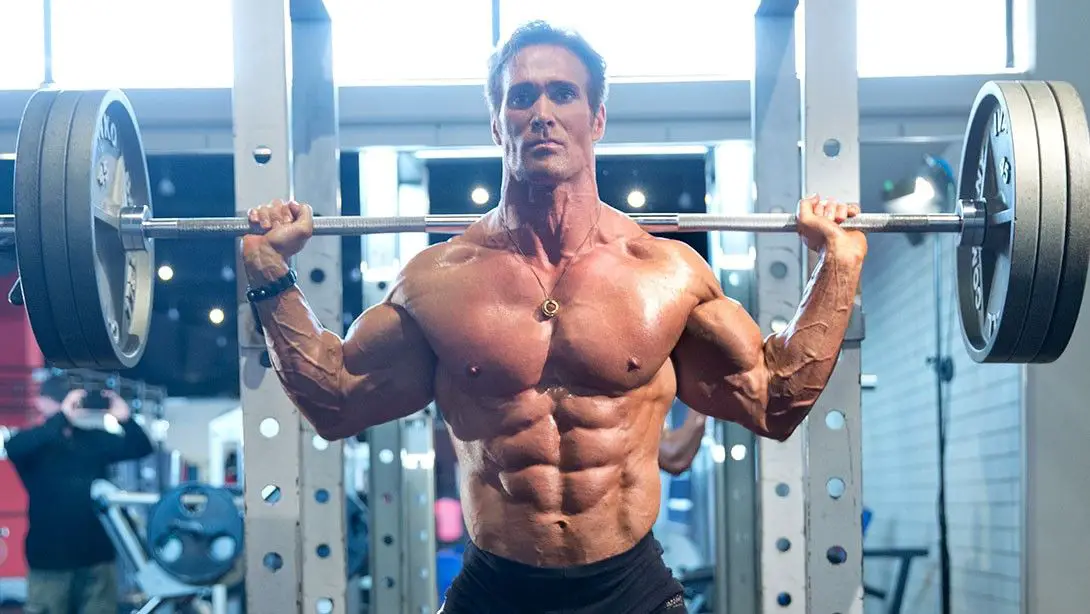Introduction
What Is A Working Set In Bodybuilding: In the world of bodybuilding, where precision and dedication are paramount, the concept of a “working set” holds a central place in achieving one’s fitness goals. Bodybuilders and strength trainers use working sets as a fundamental component of their training routines to stimulate muscle growth, increase strength, and improve overall physique. A working set, in the context of bodybuilding and strength training, refers to a specific portion of a workout routine where a lifter performs a prescribed number of repetitions (reps) and sets with a particular weight.
Repetitions represent the number of times a lifter performs a specific bodybuilder exercise. A working set typically includes a predetermined number of reps, which can vary depending on the individual’s goals, experience level, and the specific exercise being performed. A set is a group of repetitions performed consecutively without rest. Bodybuilders often perform multiple sets of an exercise during their workout routines. The number of sets can vary, but a working set typically involves one to several sets of a given exercise. The weight or resistance used in a working set is a crucial factor.
Working sets are designed to create micro-tears in muscle fibers, triggering the body’s adaptive response. As the body repairs these micro-tears, the muscles become stronger and grow in size, a process known as hypertrophy. By progressively increasing the weight or resistance used in working sets over time, bodybuilders can enhance their overall strength. This is especially important for individuals who aim to compete in strength-based competitions like powerlifting. Working sets improve muscle endurance by conditioning the muscles to withstand fatigue over multiple repetitions and sets.

What is the difference between a set and a working set?
“Warm-up Sets” = exactly as they sound. These are going to be lighter sets that get heavier and heavier with each set, so you’re prepared to rip heavy weights for your working sets. “Working Sets” = your difficult or challenging sets where you’re pushing hard and lifting at the prescribed “Reps From Failure.”
Definition: A set is a group of consecutive repetitions (reps) of an exercise performed without rest. In other words, it’s a continuous series of reps.
Purpose: Sets are used to organize and structure your workout. They serve as a way to measure and control the number of times you perform a specific exercise.
Variability: Within a workout, you can perform multiple sets of the same exercise or different exercises. The number of sets can vary depending on your training program, goals, and experience level.
Rest Between Sets: Typically, there is a rest period between sets to allow for recovery. The length of this rest can vary and can influence the intensity and effect of the workout.
What is a working set gym example?
Working sets refer to what is prescribed in your program (example: 3 sets of 10 squat reps). The idea is that you perform a few warm-up sets while working up to a challenging weight that you’d use for the 3 x 10.
Warm-up Set (Optional): Before your working sets, you might choose to perform a warm-up set with lighter weight to prepare your muscles and joints. For this example, let’s assume you did one warm-up set of 10 reps with just the bar (45 pounds).
Working Sets: In this example, we’ll focus on one working set.
Set 1 (Working Set):
- Weight: 175 pounds (This is a weight that challenges you, but you can lift it with proper form.)
- Repetitions: 8 reps (This means you’ll perform the bench press exercise 8 times consecutively without rest within the set.)
- Rest between reps: Minimal rest, just enough to reset your form and breath between each repetition.
- Execution: You’ll lift the bar off the rack, lower it to your chest, and press it back up for 8 consecutive reps with controlled form.
- Intensity: You push yourself during these reps, focusing on maintaining good technique and completing each rep with effort.
Cooldown: After completing your working set, you may take a short break and do some stretching or light cardio to cool down and promote recovery.
What does 3 working sets mean?
For example, if you are trying to build muscle in your chest, you might do 3 sets of 10 repetitions of a chest press. That means that you complete 10 repetitions of the chest press and then briefly rest. Then you complete another 10 reps and take another short break.
Number of Sets: You will perform the same exercise three times consecutively, with minimal rest in between.
Repetitions (Reps): Within each working set, you’ll complete a predetermined number of repetitions (reps) of the exercise. The number of reps can vary based on your workout program, goals, and the specific exercise you’re performing.
Intensity: Working sets are typically executed with a level of intensity that challenges your muscles. You should use a weight or resistance that is appropriate for your fitness level and the targeted training effect (e.g., strength, hypertrophy) of the workout.
Rest Between Sets: While rest between sets can vary, working sets typically involve shorter rest intervals compared to rest periods between different exercises or sets. The goal is to maintain a degree of fatigue and intensity throughout the working sets.
What is a working set in body building?
A Working Set is any set taken close to failure. A set that will bring about some kind of reward or adaptation. A set that is hard enough to cause a change. The purpose of writing down your reps and weight is so you have a target for the next training session.
Repetitions (Reps): A working set involves performing a predetermined number of repetitions of a specific exercise. The number of reps can vary based on your training program, goals, and the exercise being performed.
Sets: Working sets are typically organized into multiple sets of the same exercise. You might perform one, two, or more working sets depending on your workout plan.
Intensity: Working sets are executed with a high level of intensity. This means using a weight or resistance that challenges your muscles and requires a significant effort to complete the prescribed number of reps. The intensity ensures that your muscles are sufficiently stimulated to encourage growth and adaptation.
Is 1 working set enough?
The right answer depends on you and your goals and your current fitness level. If you’re really going for strength gains, muscle endurance, and muscle growth, multiple sets have an advantage. But single-set training may work well for many people.
Strength Maintenance: If your primary goal is to maintain your current strength level or improve muscular endurance, one working set may be adequate for some exercises, especially if you’re performing compound movements like squats or deadlifts.
Muscle Hypertrophy (Size): For muscle hypertrophy (increasing muscle size), bodybuilders typically incorporate multiple working sets per exercise. Three to five working sets per exercise are commonly used to target this goal effectively.
Strength Gain: If you aim to increase your strength, especially in compound lifts like bench press or squat, multiple working sets with progressive overload (gradually increasing the weight) are usually recommended.
What are the advantages of working set?
The working set model finds out the number of unique pages in a locality, and maintains those many frames for the process. Hence all the required pages can be in the main memory for a certain locality. This prevents thrashing and reduces page faults.
Stimulation of Muscle Growth (Hypertrophy): Working sets are designed to challenge muscles by using a weight or resistance that requires maximal effort to complete the prescribed number of reps. This high level of intensity helps stimulate muscle growth or hypertrophy, leading to increased muscle size and improved muscle definition.
Strength Development: Working sets with progressively heavier weights contribute to strength development. As you increase the resistance over time, your muscles adapt by becoming stronger, allowing you to lift more weight and perform exercises with greater ease.
Improved Endurance: Performing multiple working sets with minimal rest intervals within each set helps enhance muscular endurance. This is especially beneficial for activities that require sustained muscle performance over extended periods.
How many sets is a working set?
No matter how many reps you’re completing per set, most fitness experts recommend performing between two and six sets for each exercise. Anything below two sets may not challenge you enough; anything over six sets could lead to overworked muscles.
Hypertrophy (Muscle Size): Bodybuilders often perform three to five working sets of an exercise to induce muscle growth. Each working set typically includes multiple sets (e.g., three sets of 10 reps each).
Strength Development: Powerlifters and individuals focused on increasing strength may perform fewer working sets with heavier weights. One to three working sets of compound exercises are common in strength training.
Endurance: For muscular endurance, working sets might include higher repetitions and more sets (e.g., four sets of 15-20 reps each).

Conclusion
In the realm of bodybuilding, where sculpting the ideal physique is both an art and a science, the concept of a “working set” holds profound significance. For bodybuilders and fitness enthusiasts alike, the term “working set” encapsulates a fundamental principle that is instrumental in achieving strength, muscle growth, and overall physical transformation. A working set, within the framework of bodybuilding and strength training, represents a dedicated segment of a workout regimen. It involves performing a defined number of repetitions (reps) and sets of a specific exercise with a predetermined amount of resistance (weight).
Repetitions denote the number of times an individual executes a particular exercise. Within a working set, a specific quantity of reps is typically assigned. The selection of the number of reps can hinge on the individual’s objectives, skill level, and the nature of the exercise being undertaken. A set represents a consecutive series of repetitions performed without interruption. Bodybuilders frequently engage in multiple sets of a given exercise throughout their training sessions. The number of sets can fluctuate, but a working set generally encompasses one or more sets of an exercise.
Working sets cultivate muscle endurance, conditioning the muscles to endure fatigue across multiple repetitions and sets. Bodybuilders often track their advancement by meticulously recording details such as the weight lifted, the number of reps achieved, and the number of sets executed during working sets. This data facilitates the establishment and attainment of objectives while ensuring a continuous trajectory of improvement. Working sets enable a focused and time-efficient approach to target specific muscle groups, permitting bodybuilders to maximize the benefits of their training within reasonable timeframes.

